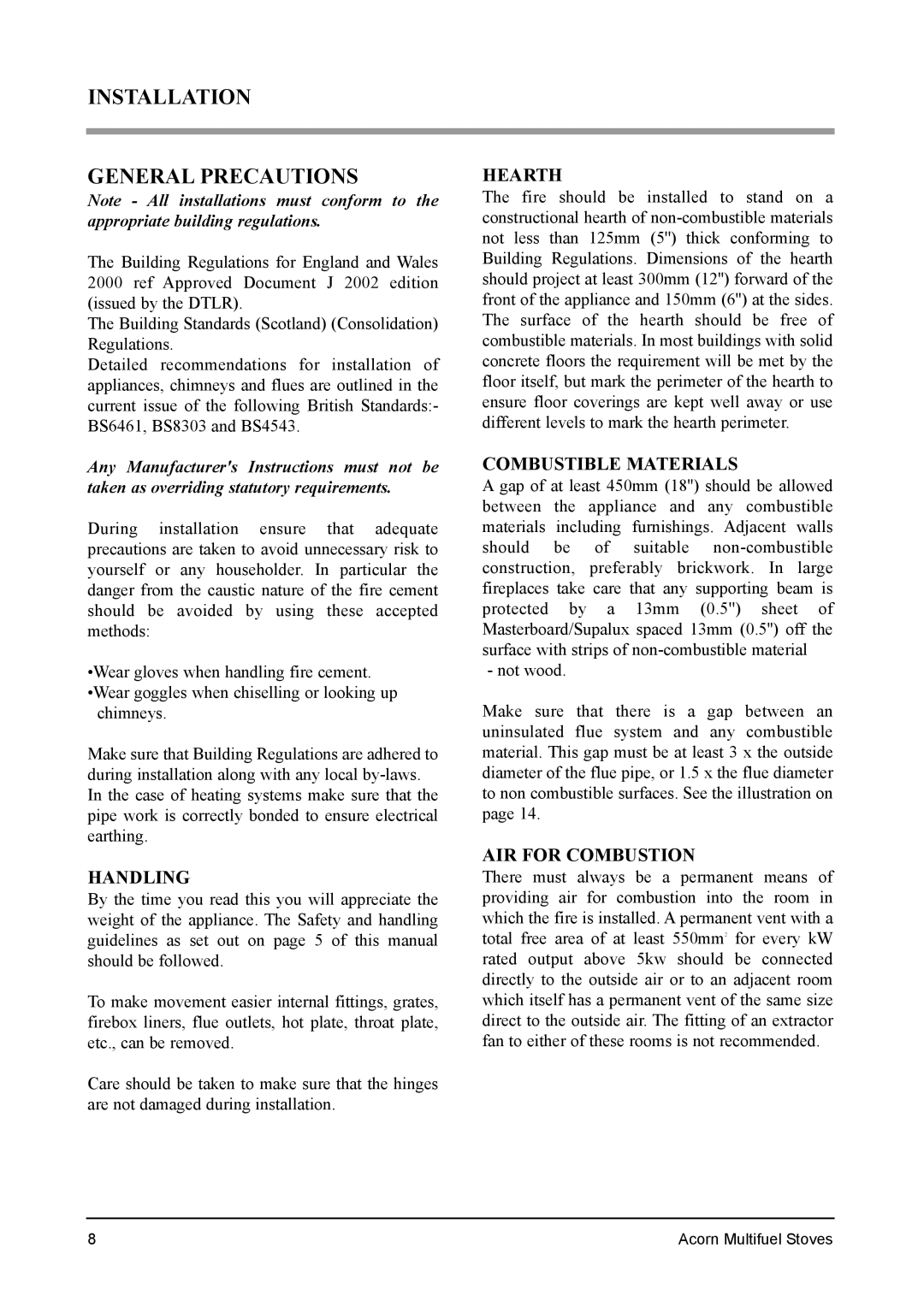
INSTALLATION
GENERAL PRECAUTIONS
Note - All installations must conform to the appropriate building regulations.
The Building Regulations for England and Wales 2000 ref Approved Document J 2002 edition (issued by the DTLR).
The Building Standards (Scotland) (Consolidation) Regulations.
Detailed recommendations for installation of appliances, chimneys and flues are outlined in the current issue of the following British Standards:- BS6461, BS8303 and BS4543.
Any Manufacturer's Instructions must not be taken as overriding statutory requirements.
During installation ensure that adequate precautions are taken to avoid unnecessary risk to yourself or any householder. In particular the danger from the caustic nature of the fire cement should be avoided by using these accepted methods:
•Wear gloves when handling fire cement. •Wear goggles when chiselling or looking up
chimneys.
Make sure that Building Regulations are adhered to during installation along with any local
HEARTH
The fire should be installed to stand on a constructional hearth of
COMBUSTIBLE MATERIALS
A gap of at least 450mm (18'') should be allowed between the appliance and any combustible materials including furnishings. Adjacent walls should be of suitable
- not wood.
Make sure that there is a gap between an uninsulated flue system and any combustible material. This gap must be at least 3 x the outside diameter of the flue pipe, or 1.5 x the flue diameter to non combustible surfaces. See the illustration on page 14.
AIR FOR COMBUSTION
HANDLING
By the time you read this you will appreciate the weight of the appliance. The Safety and handling guidelines as set out on page 5 of this manual should be followed.
To make movement easier internal fittings, grates, firebox liners, flue outlets, hot plate, throat plate, etc., can be removed.
Care should be taken to make sure that the hinges are not damaged during installation.
There must always be a permanent means of providing air for combustion into the room in which the fire is installed. A permanent vent with a total free area of at least 550mm2 for every kW rated output above 5kw should be connected directly to the outside air or to an adjacent room which itself has a permanent vent of the same size direct to the outside air. The fitting of an extractor fan to either of these rooms is not recommended.
8 | Acorn Multifuel Stoves |
